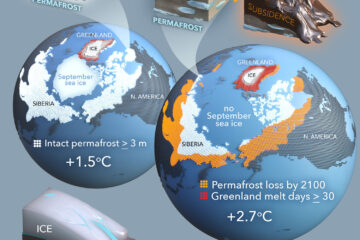Using microbial communities and extracellular enzymes to link soil organic matter characteristics to greenhouse gas production in a tidal freshwater wetland
To gain a more mechanistic understanding of how soil organic matter (OM) characteristics can affect carbon mineralization in tidal freshwater wetlands, we conducted a long-term in situ field manipulation of OM type and monitored associated changes in carbon dioxide (CO2) and methane (CH4) production. In addition, we characterized microbial community structure and quantified the activity of several extracellular enzymes (EEA) involved in the acquisition of carbon, nitrogen, and phosphorus. Treatments included a plant litter addition, prepared using naturally-senescing vegetation from the site, and a compost amendment, designed to increase the concentration of aged, partially humified, OM. Both types of OM-amended soils had CO2production rates 40–50 % higher than unamended control soils, suggesting that the added OM had inherently higher quality and/or availability than the native soil OM. Rates of CO2 production were not correlated with microbial community structure or EEA except a modest relationship with cellulose breakdown via the Km of β-1,4-glucosidase. We interpret this lack of correlation to be a consequence of high functional redundancy of microorganisms that are capable of producing CO2. Rates of CH4production were also influenced by OM quality, increasing by an order of magnitude with plant litter additions relative to compost-amended and control soils. Unlike CO2, rates of CH4 production were significantly correlated with the microbial community structure and with enzyme kinetic parameters (Vmax and Km) for both carbon (β-1,4-glucosidase, 1,4-β-cellobiosidase, and β-d-xylosidase) and nitrogen acquisition (leucyl aminopeptidase). The monophyletic nature of methanogenic archaea, combined with their reliance on a small select group of organic substrates produced via enzyme-mediated hydrolysis and subsequent bacterial fermentation, provides a basis for the strong links between microbial community structure, EEA, and CH4 production. Our results suggest that incorporating microbial community structure and EEA into conceptual models of wetland OM decomposition may enhance our mechanistic understanding of, and predictive capacity for, biogeochemical process rates.


